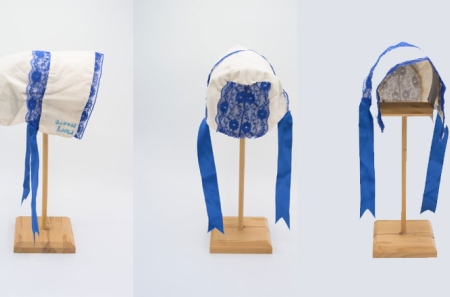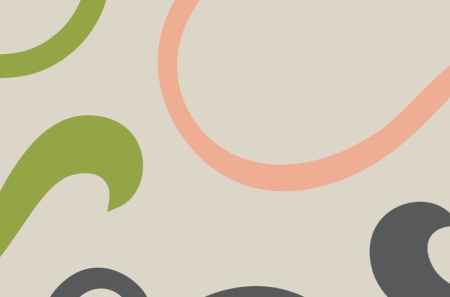
New Research Data Collection: St. Kieran's College, Kilkenny, Class Portraits and Student Records Digitisation Project 2021
27 May 2022The collection class portraits and student records from St. Kieran's College, Kilkenny has been published in the Digital Repository of Ireland.
Our latest collection is class portraits and student records from St. Kieran's College, Kilkenny. The digitisation of this collection was part of a research project undertaken by Richard Fitzpatrick. It was funded in 2021 by the Nowlan grant from the Royal Irish Academy (RIA). In this interview, Lisa Griffith, DRI Membership Manager, is speaking to Richard who will talk about the place of the collection in his wider research, and Niamh McCabe, Senior Programme Manager for Grants at RIA will talk to us about the Nowlan grant and the work it does to support digitisation.
Richard- can you please tell us about your research?
Hi Lisa, and thank you for the opportunity to talk to you today about my research and recent deposit with the DRI. My research forms part of the Clericus digital humanities project based in Maynooth’s Arts and Humanities Institute. Our project aims to develop a database on Ireland’s clergy for the period c.1535 to 1945 (www.clericus.ie). The project has sought to digitise and preserve ordination class portraits and student records belonging to several Irish seminaries as part of this work. A class portrait (or class piece) consists of individual photographs of newly ordained students, alongside college staff and guests of honour (i.e. a bishop or cardinal), mounted together and displayed in a college. Everyone’s photograph in a class portrait is accompanied by their name, in English, Latin or Irish, and affiliated diocese/religious order. Some early examples of class portraits constitute works of art containing elaborate ornamentation, design, and symbolism. Thus far, the largest collection we have digitised belongs to St. Patrick’s College Maynooth (SPCM) and numbers over 120 class portraits dating as far back as the 1870s.
Where does this collection fit into your research project?
I was fortunate enough to receive a Kevin B. Nowlan Digitisation Grant from the RIA in 2021 to assist with the digitisation of another class portrait collection belonging to St. Kieran’s College Kilkenny. This in turn has preserved an additional 60 class portraits, with the earliest example dating from 1921. On top of this, student records for St. Kieran’s were also used to enrich this data, and cumulatively these have added over 2,000 new biographical entries to the Clericus database. Combining these records with those already present within the database provide, for instance, greater insights into student formation, mobility, and connections between educational institutions. Additionally, the closure of St. Kieran’s seminary during the 1990s means it is imperative that these artifacts and records were preserved for posterity and future generations of researchers and the general public. Within this spirit, all pre-1945 portraits and student records from the college were recently deposited with the DRI. Going forward, the successful digitisation and depositing of the St. Kieran’s data put us in an excellent position to hopefully continue this work by preserving additional portrait and student collections belonging to other Irish seminaries.
Who do you hope will re-use this research data?
Given the richness of these sources, I hope the newly deposited data from St. Kieran’s will appeal to researchers from across the humanities. Class portraits provide an important and unique pictorial record of thousands of students and can be useful to researchers in several ways, including how the objects reflect wider social, cultural, and economic changes within Irish society and the Catholic church. Simple yet telling examples include changes in language, personal grooming, dress, and the numbers of students and their affiliated dioceses/orders. Beyond academic considerations, I would also hope that my research and the data deposited with the DRI will appeal to local historians and members of the public interested either in individual students or the areas they hailed from or later served in. The latter point is particularly relevant to St. Kieran’s and its role as a missionary college training priests for service in North America, Great Britain, Australia, and New Zealand. From this perspective, the potential interest in the newly deposited material extends well beyond the borders of Ireland and links in with Irish diaspora studies.
Niamh- can you tell us about the Nowlan grant?
The Nowlan Digitisation grant scheme is a new scheme that was established by the RIA following a generous bequest by the late Prof. Kevin B. Nowlan for Archaeology and History. The intention of these grants is to fund research focusing on professional digitisation with a distinct and identifiable standalone output and a commitment to make a body of information accessible to anyone upon completion of the project. All proposals must identify a clearly defined standalone project which will be accessible on an institutional website within the defined Grant programme timeline. In line with the Academy’s focus on ensuring long-term preservation and access to digital collections, all projects are also required to submit their digital outputs and metadata available to the Digital Repository of Ireland. Funding of up to €10,000 is available for each successful project under the scheme, to support the direct costs of digitising material. The scheme opened for the first time in 2020 and following a competitive process, grants were awarded to four projects which aimed to digitise historical sources, or in some cases update existing resources and make them available through open and free access to researchers. In late 2021 the scheme opened to those working on archaeological resources and the results of this round of funding will be available shortly. The scheme will open once again to those working on historical resources later this year.
What projects has it funded to date?
In addition to Dr. Fitzpatrick’s project, Meadhbh Murphy of UCD was funded to work on the digitisation of nineteenth-century medical illustrations from the Richmond Hospital in Dublin, and Prof Deirdre Raftery (UCD) for the digitisation of the Carysfort College Registers (1883-1922) and Prof. David Stifter of Maynooth University for ‘A Digital Corpus of Medieval Irish Latinate Inscriptions. All these projects are in line with the core aim of the scheme and digital outputs will be submitted to the DRI in due course.
How do people find out more about how to apply for this grant?
All information related to these grants is available on the RIA website and any queries can be directed to me or my colleagues at grants@ria.ie. It may also be useful to sign up for the RIA newsletter and highlight ‘Grants’ as an area of interest to ensure that you don’t miss the call for applications, or any other Grants opportunities which might be relevant to you.
Thanks to Richard Fitzpatrick and Niamh McCabe for taking part in our Q&A blog. You can explore the St. Kieran's College, Kilkenny, Class Portraits, and Student Records in the Repository now.
Image Credit: Richard Fitzpatrick (2021), St. Kieran's College Class Portrait from their ordination in June 1921, Digital Repository of Ireland [Distributor] Royal Irish Academy [Depositing Institution] https://doi.org/10.7486/DRI.3b59f2384



